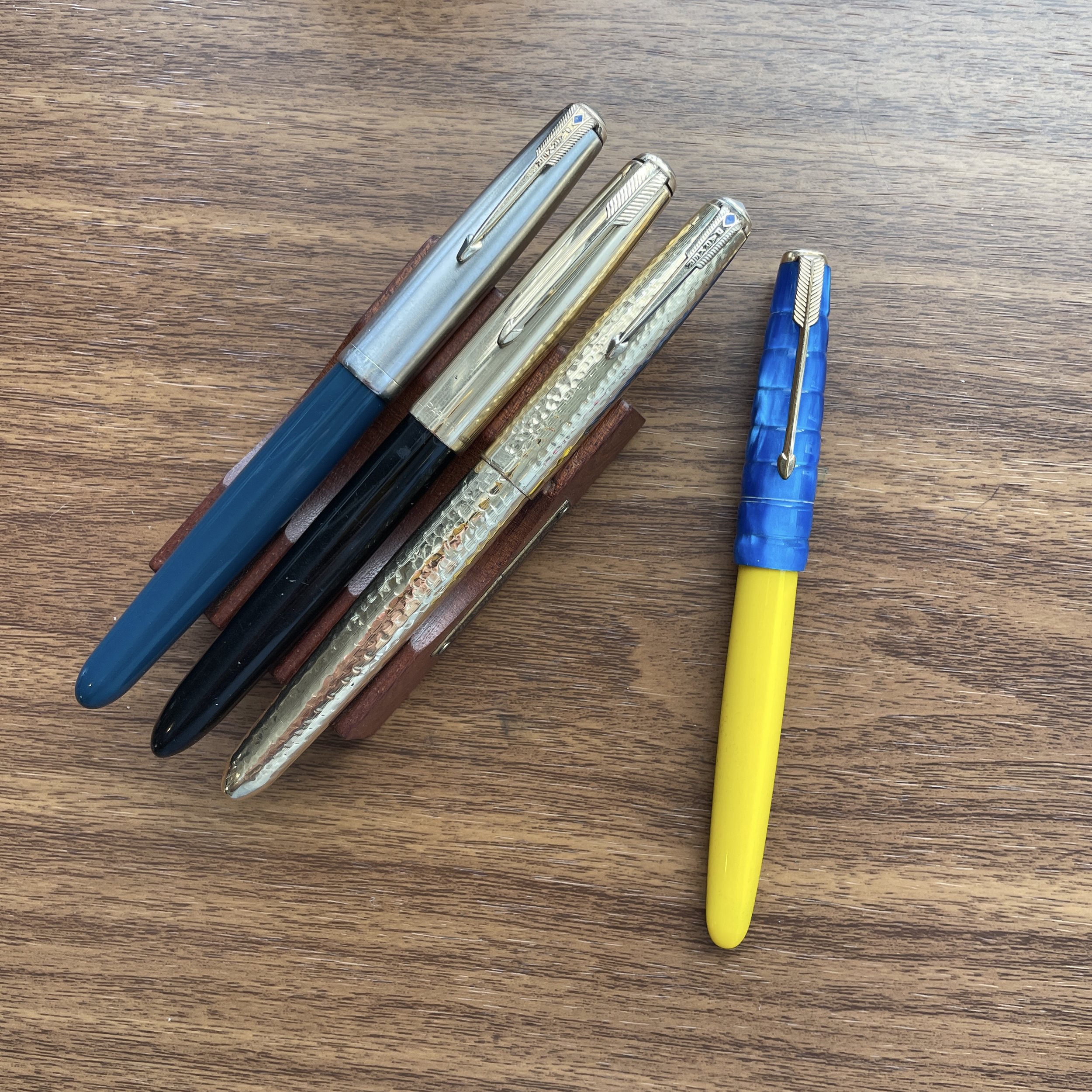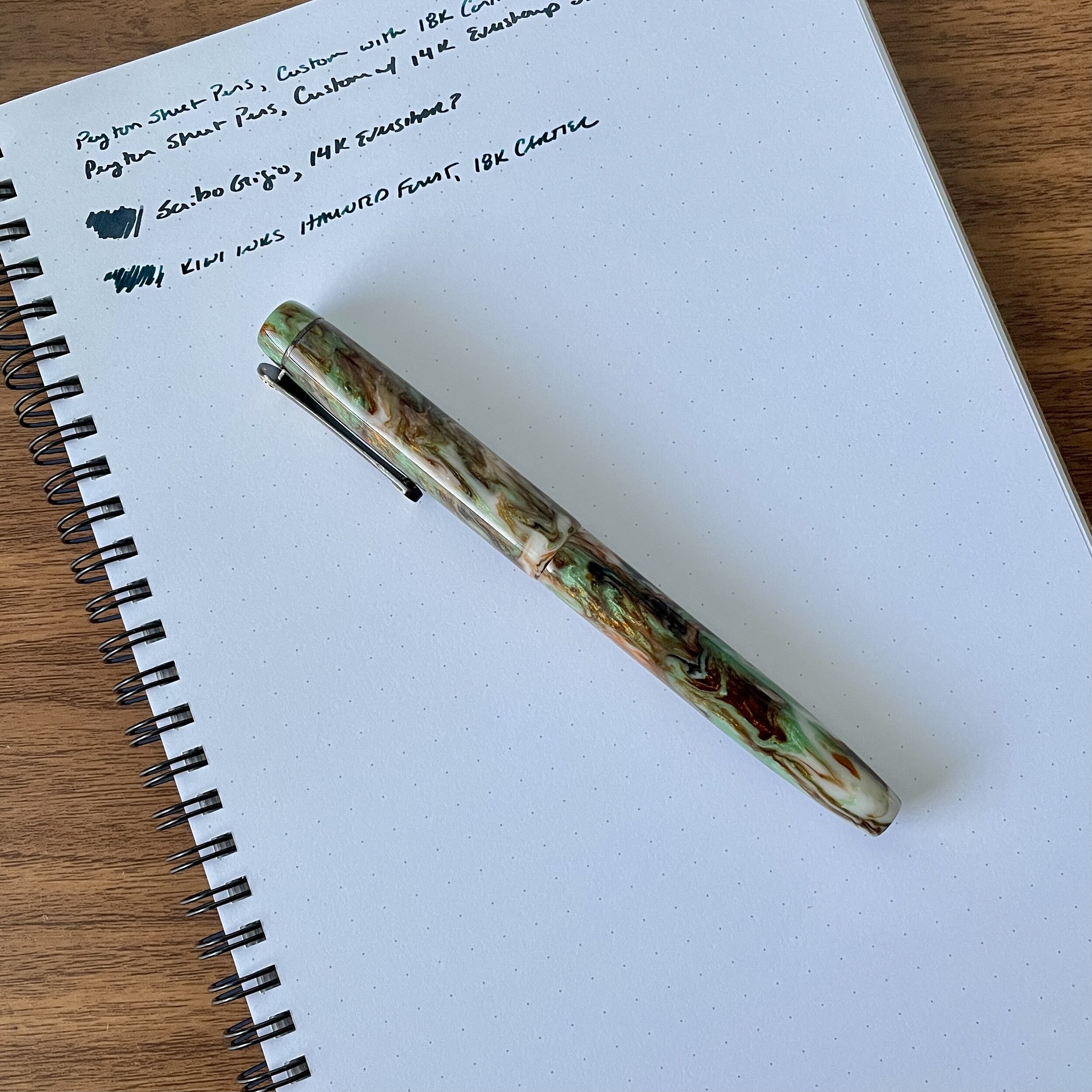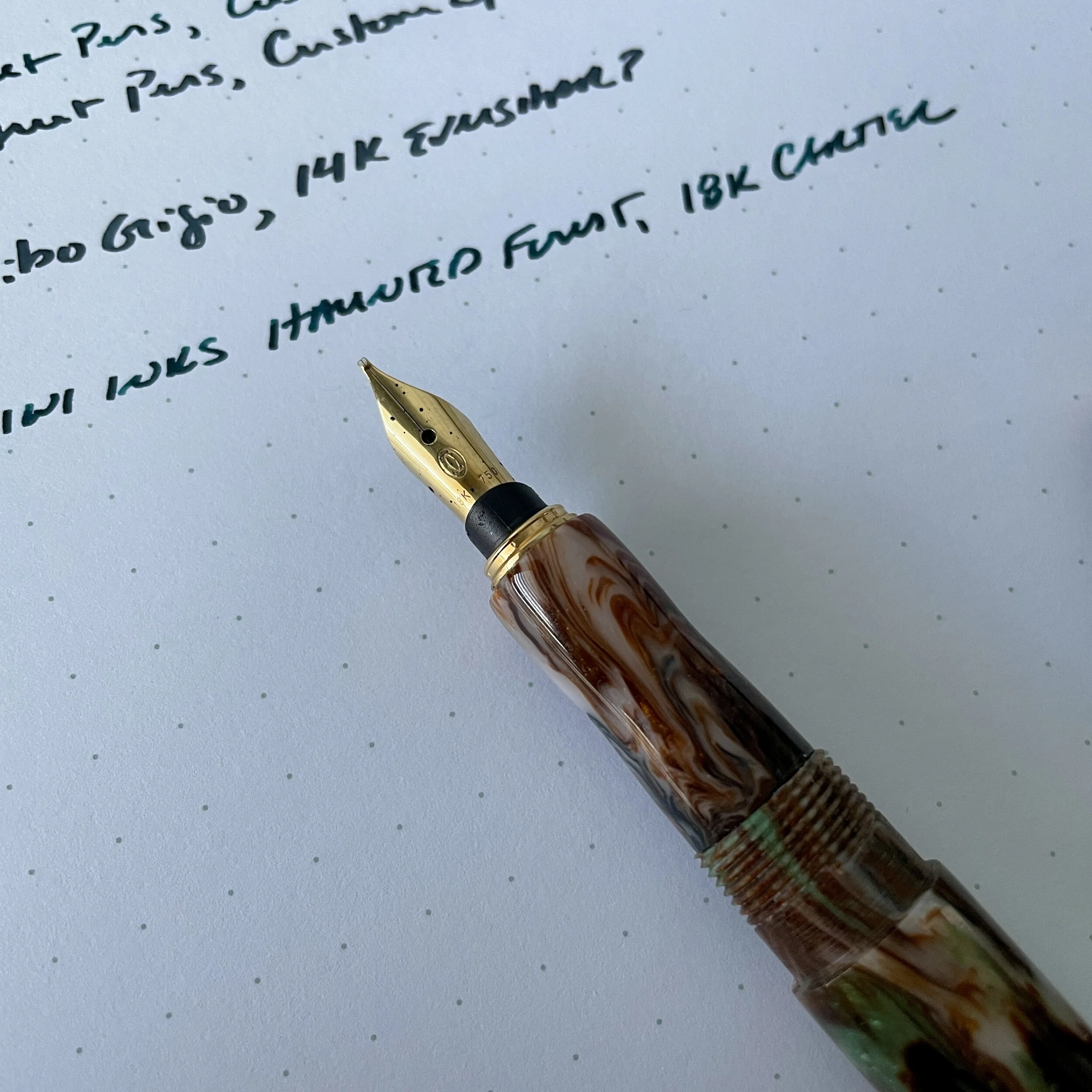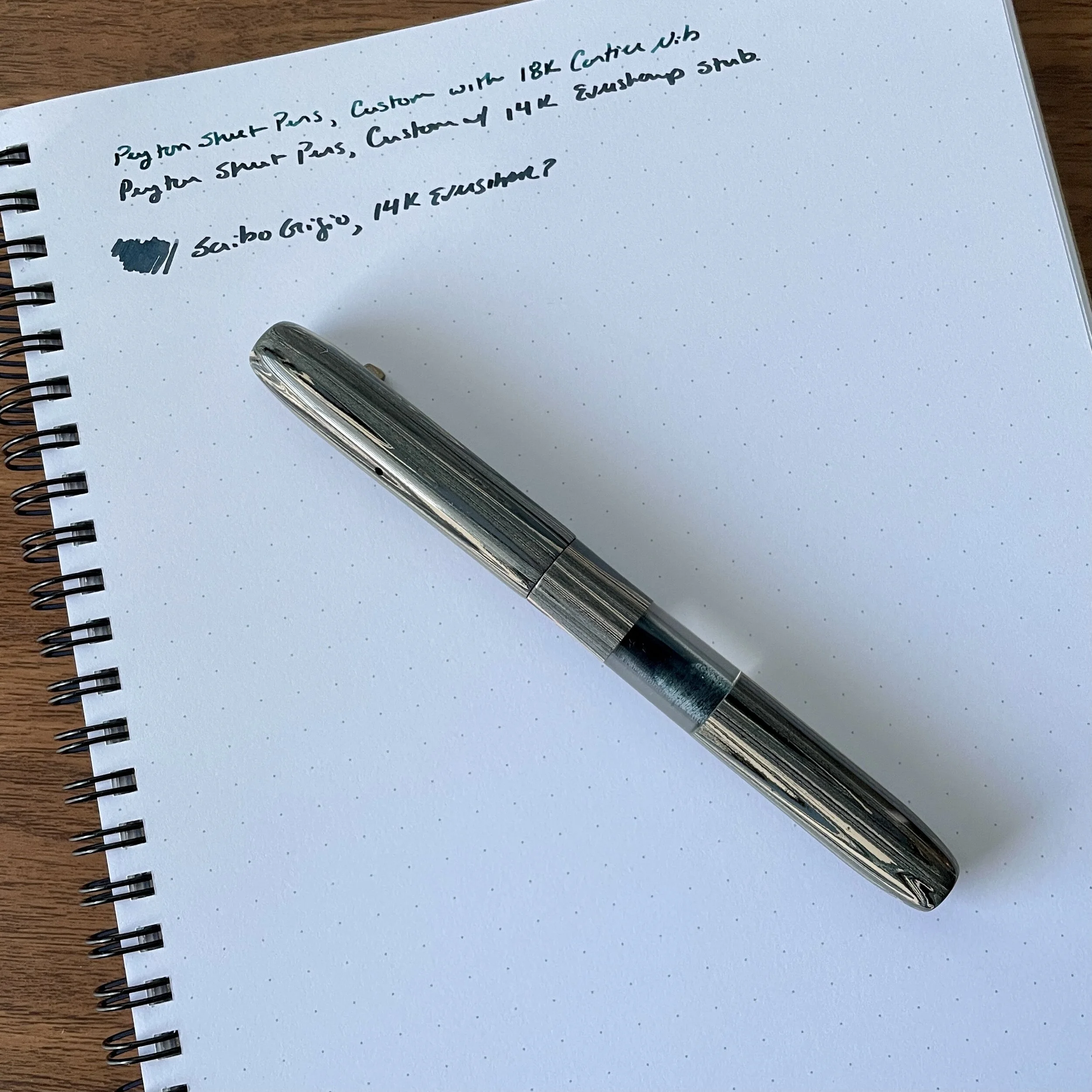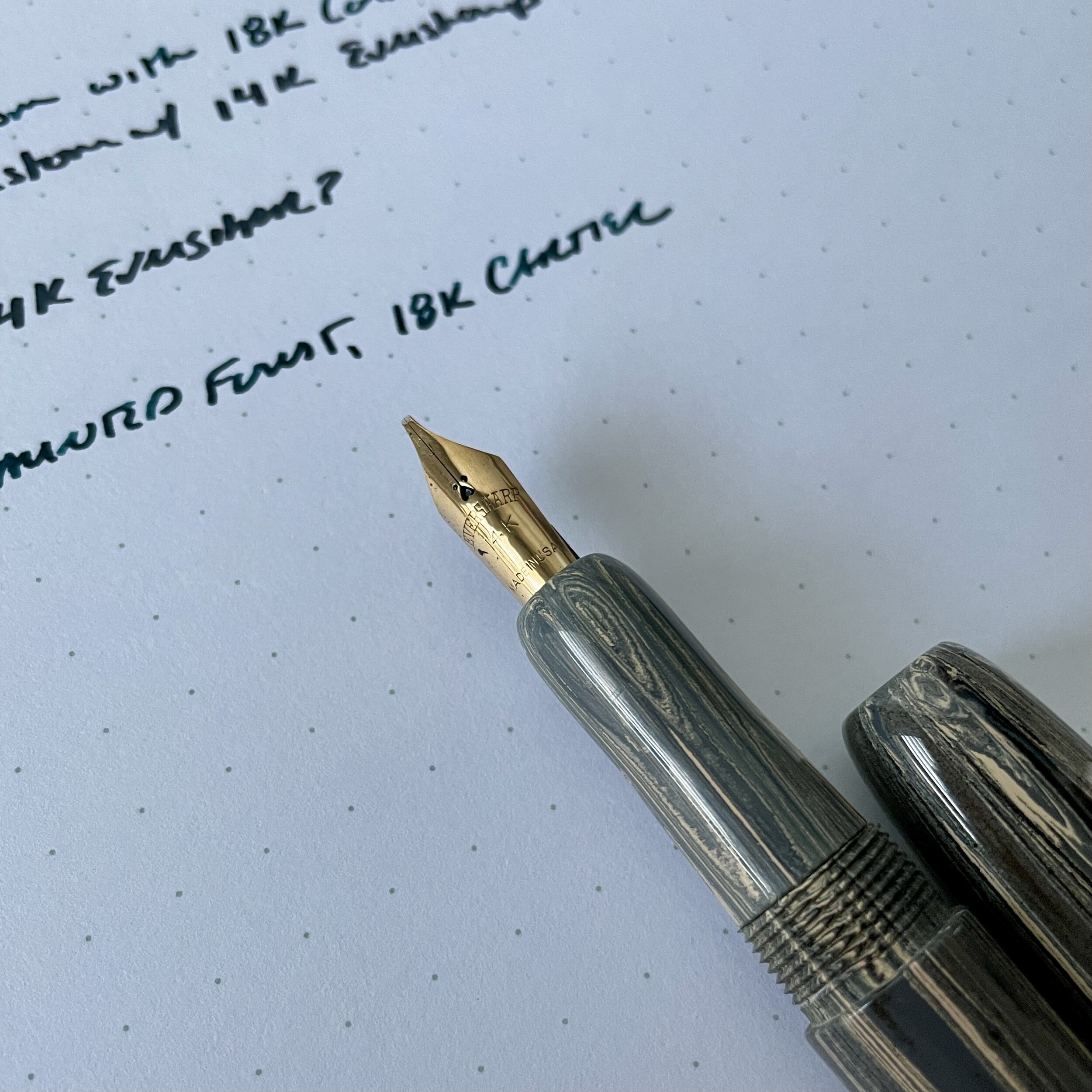I tend to not chase scarcity. My personal collection mainly consists of pens that I’ve purchased with the intent of using them for everyday writing. To the extent something remains in the collection, but doesn’t get used, it’s likely because the pen has become too fragile through age or overuse to withstand the normal wear of my workday. I seldom purchase something simply to say that I own an example, so if it’s in my pen case, I plan to write with it.
The Pilot Myu Black Stripe, which adds a bit more texture to the pen in the form of the engraved vertical stripes.
I also rarely review so-called “unobtanium” (i.e. pens that get a lot of attention but you can’t actually find in the wild at a reasonable price). My goal for The Gentleman Stationer has always been to create a practical resource to help people learn about stationery and fine writing instruments. There’s not much practical value to writing about those vintage pens that are increasingly difficult to find, and when you do, they cost upwards of 10x the original price.
The vintage Myu typically comes with some version of the Pilot CON-20 squeeze converter, making it relatable to most modern Pilot users. The pens also accept modern Pilot cartridges (including the new Iroshizuku cartridges).
You might already have guessed that I’m going to make something of an exception today and talk about one of my favorite vintage pens, the Pilot Myu, which I love to write with but if I’m honest, may like them a bit too much to carry around everyday since I’m not sure I’d be able to replace these pens if something happened. I own two, which date to the early to mid 1970s, and are known for their integrated nibs. By “integrated nib,” I mean that the nib is not a separate unit: the entire pen - body, section, and nib - are machined from a single piece of metal (stainless steel). I can best describe the end result as something of a futuristic cross between a Pilot Vanishing Point and a Parker 51. The lack of any seams between the nib and the rest of the pen body give this pen gorgeous lines. Despite the stainless steel construction, the Myu is fabulously well-balanced, and the cap posts and closes securely.
What Makes the Pilot Myu Special, and Why Write About It?
First, there’s really nothing quite like the Myu currently on the market, and it’s so unique that I don’t begrudge anyone for shelling out the somewhat inflated secondary market prices for these pens. Integrated nib pens were a trend that emerged in the early 1970s, but due to manufacturing difficulties and the declining fountain pen market at the time, never completely took off. Despite the scarcity, I still feel that it’s fair to call the current price point “inflated” because even though they are somewhat rare, Pilot originally intended for them to serve as everyday workhorses at a lower-to-mid tier price point. Several years ago, the Myu received a lot of podcast/blogosphere hype as the “best pocket pen ever made” or something to that effect, and the prices seemingly shot up overnight into the $300-$500 range. I did a recent survey of eBay pricing and saw a few in the $250 range, which feels more realistic but still expensive.
The Myu (right) next to the Pentel Sharp Kerry mechanical pencil.
Second, the Myu is an interesting piece of stationery history because you can still see certain similar design elements in other products that remain available. This week I wrote about the Pentel Sharp Kerry (which is visually similar but may actually predate the Myu), and you can also see bits of the Myu legacy in the monobody Schon Monoc nib, as well as the current Pilot Elite/E95S fountain pen. If you’re a fan of this style of stationery (as I am), it can be quite cool to own the original.
Finally, building a bit off of No. 1 above, the Myu offers a very distinct writing experience that’s much more tactile and “direct” than a typical fountain pen - it almost feels as though you are writing with a metal stylus or etching tool. The nib has zero give (very stiff), though at the same time the medium-fine shown here is a wet writer. Those who love a bit of tooth and a tactile feel to their nib often appreciate the Myu.
Pilot Myu Medium-Fine Nib, Caran d’Ache Hypnotic Turquoise ink; Write Notepads Paper.
Takeaways and Should You Buy One?
The Myu remains one of the more unique fountain pens in my collection, and possibly one of the top five most iconic pieces of stationery, vintage or modern, that I own. While I have two of them, I bought them a year or two before the surge in popularity, and the current price point might be more than what many people find reasonable for a vintage pen that can be difficult to repair. Case in point: certain Myus (including the silver one shown here) have a tendency to leak around the clutch mechanism (“teeth”) at the bottom of the section. This issue can be fixed, but not many know how to do it. Years ago I was referred to someone via Fountain Pen Network who fixed my pen, and it writes well now, but if this problem were to arise again I’d likely have to hunt down a new repair person. Though an element of risk exists with any vintage pen purchase, less common pens like this one can feel riskier unless you know someone who can work on them.
Though longer and slimmer than a Kaweco Sport, I would still call the Myu a pocket pen, though given the age and relative value of this pen I have never used either of my Myu’s for actual pocket carry.
So should you buy one? It’s a hard question for me to answer, and I don’t feel comfortable “recommending” the Myu because it’s not as easily accessible in terms of both pricing and repair as something like a Parker 51 or even a vintage Kaweco Sport. But, if you’re a die-hard pocket pen fan and want to own an example of what many consider to be the best-ever iteration of the format, you will be very happy with this pen. Personally, I won’t be selling my two specimens anytime soon. :)
The Gentleman Stationer is supported entirely by purchases from the T.G.S. Curated Shop and pledges via the T.G.S. Patreon Program. If you enjoy our content and articles such as this one, please consider supporting us directly.
